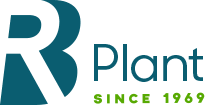
Optimizing the Rendering Process in Autodesk 3ds Max

The Customer’s Challenge
Since 2005, Pelican Energy Consultants, LLC has been providing services to the energy industry with innovative and cost-effective solutions. Their commitment to quality, safety, and practical solutions is the primary catalyst and constant motivation to continually improve their processes and the tools with which they provide professional services to their customers. Pelican Energy was attempting to render an image of a large-scale liquid natural gas dock facility. Still, the model was challenging to import into the rendering environment, and they encountered numerous complications once inside 3ds Max. They also noted that the rendering process was extremely slow because of the overall size of the files being rendered and the large number of visual artifacts.
The Project Goals
Their corporate goals were simple; they needed to find a way to handle and import large 3d party files into the Autodesk 3ds Max environment, which often required some preliminary manipulation and reordering of modeling content. Secondly, they needed to understand the capabilities of 3ds Max better as it relates to their specialized business needs, and finally, discover and institute procedures for the types of rendering necessary to achieve their business model related to their customers’ needs.
The Solution
Determined to overcome these obstacles, Pelican Energy sought out Symetri (Formerly Team D3) to review their sample files and embarked on a journey to transform their rendering capabilities. After thoroughly evaluating the customer’s needs, Symetri (Formerly Team D3) created a procedural workflow for rendering a sample project before delivering related training. Symetri (Formerly Team D3) developed an exchange conduit of digital data between Pelican Energy and 3ds Max. Then, it provided customized training to their operators on the application and used a strategic process to help them meet their requirements and end goals.
Note: Autodesk 3ds Max, formerly 3D Studio and 3D Studio Max, is a professional 3D computer graphics program for creating 3D animations, models, and images. Additional Autodesk products used in the solution were AutoCAD, Plant3D, Advanced Steel, and Civil3D.
The Business Outcome
As a tangible benefit of the professional training provided, the customer could complete the first portion of a subsequent project while in class, something that he had not been able to do before the training. They could process images rendered in a matter of minutes, in contrast to the multiple rendering hours previously required. Shortly after the class was completed, the design was changed, but because the prescribed process and workflow resulted in reusable assets, they could complete the design change in short order.
Conclusion
While completing phase-1 training marked a significant achievement, Pelican Energy recognizes that there is still much to explore and master. They eagerly anticipate further functionality and skillsets to be unveiled in their rendering process as they continue to harness the power of Symetri (Formerly Team D3)’s expertise.
In an industry driven by practical solutions and constant improvement, the collaboration has provided Pelican Energy with the tools and knowledge to propel their success forward. With enhanced rendering capabilities, streamlined workflows, and a newfound sense of empowerment, they are well-equipped to meet their customer’s needs and forge ahead in the industry.
Related Cases



